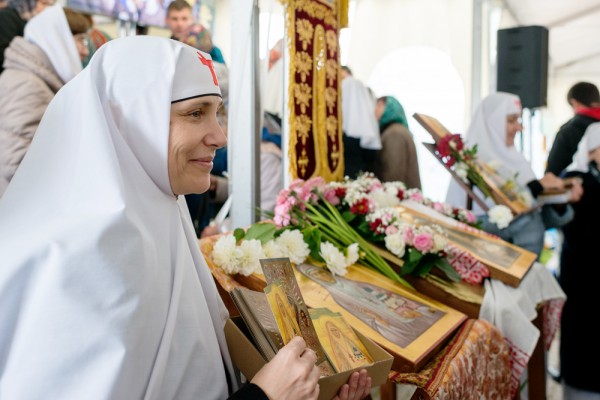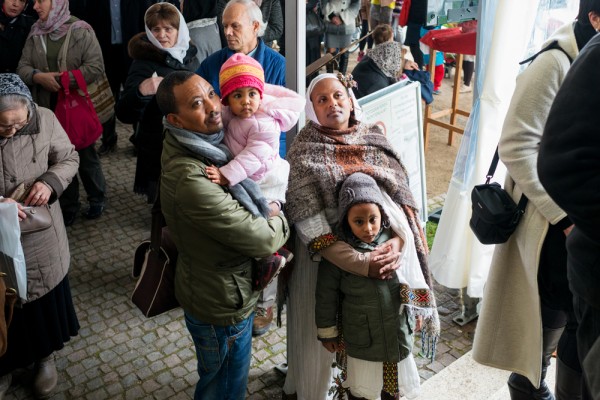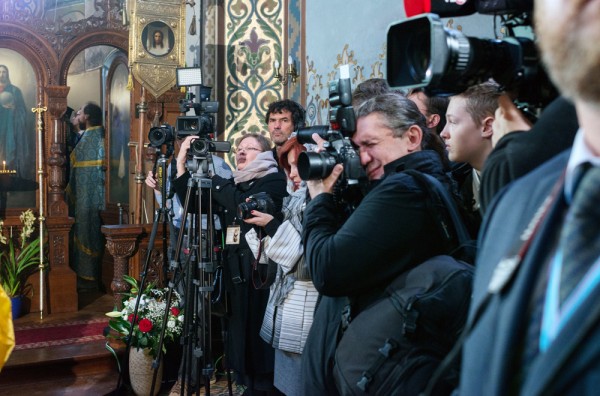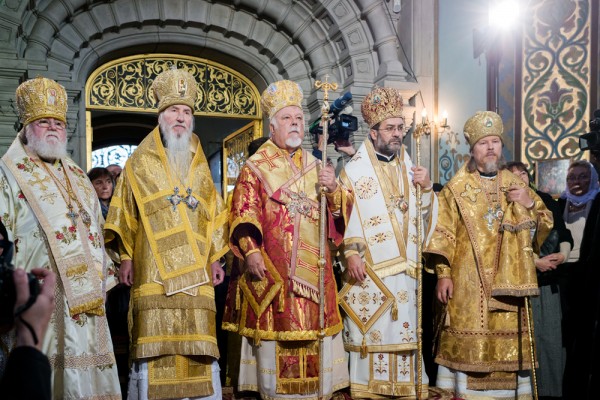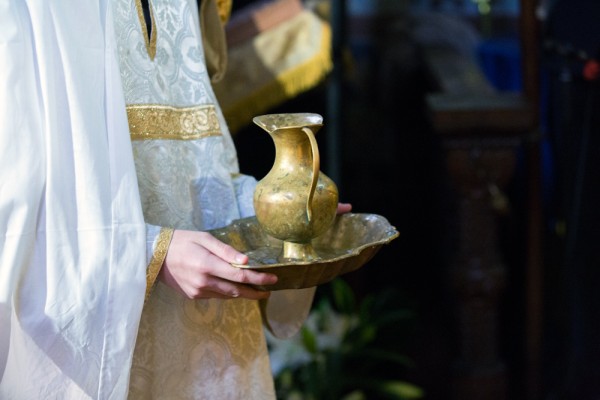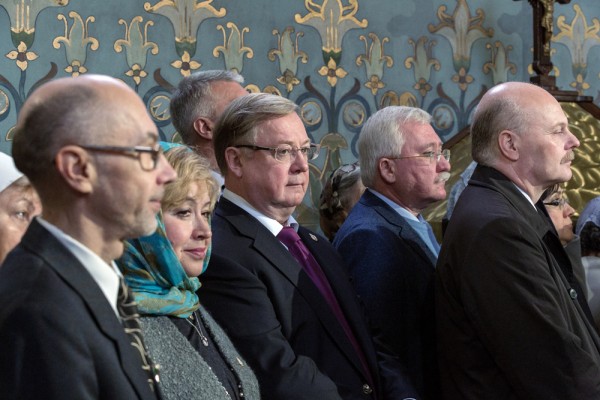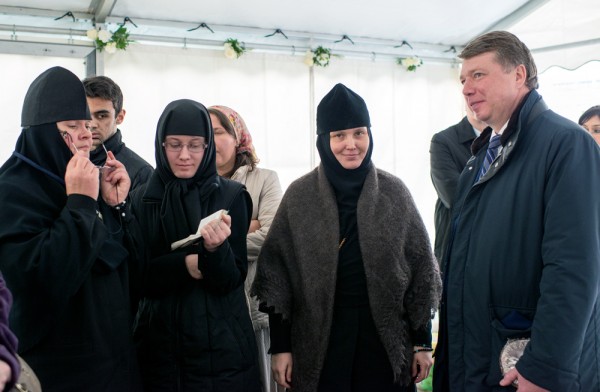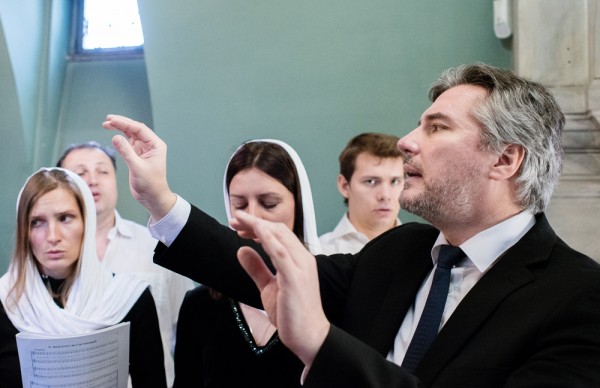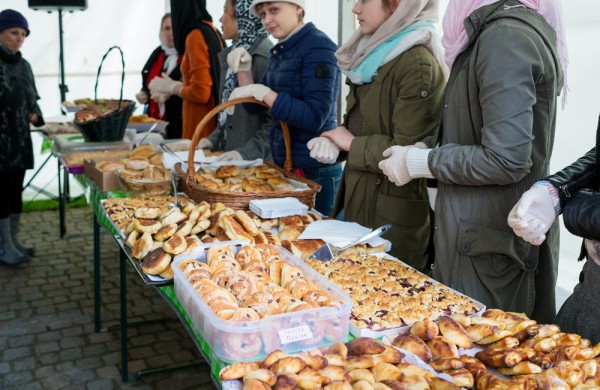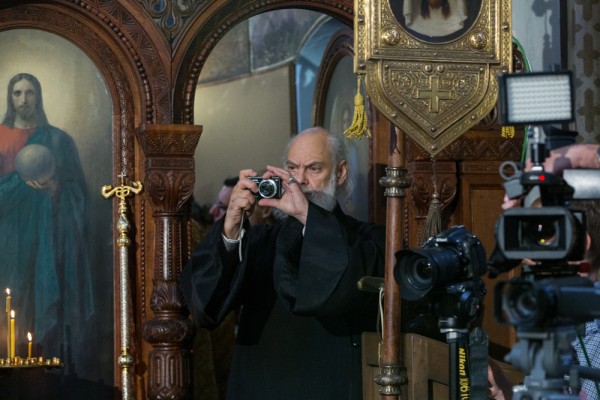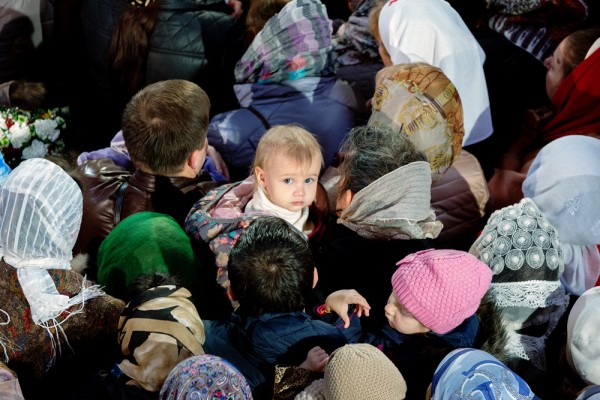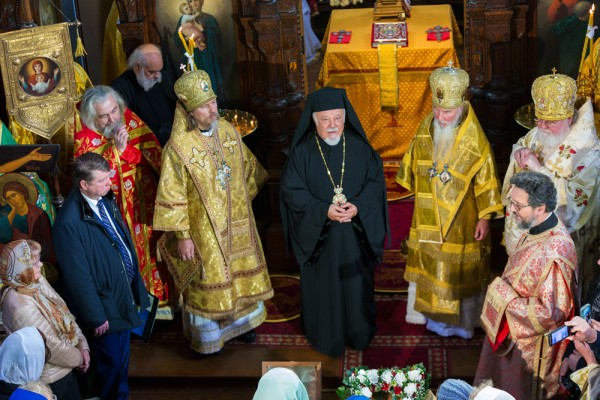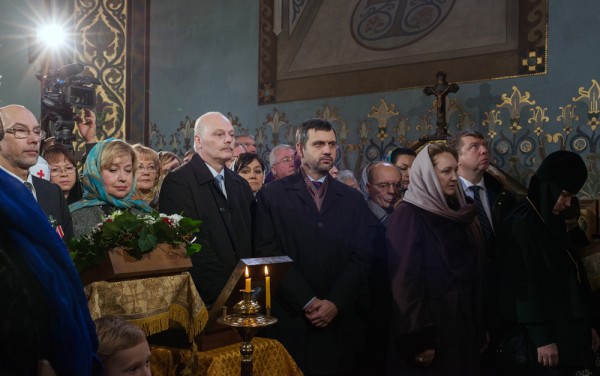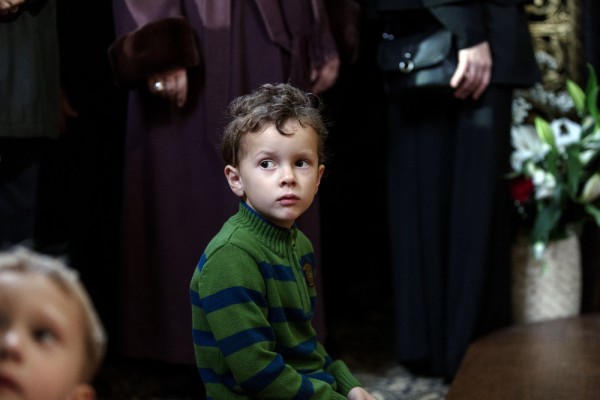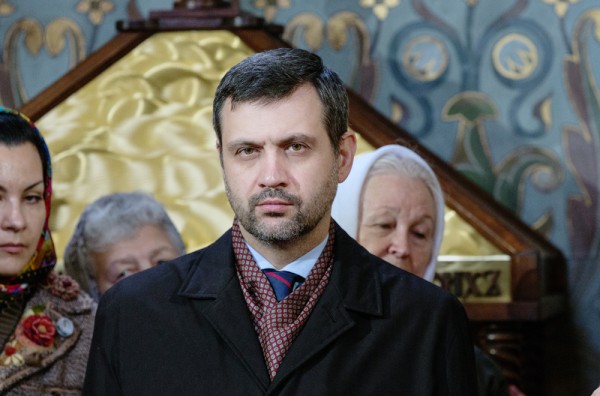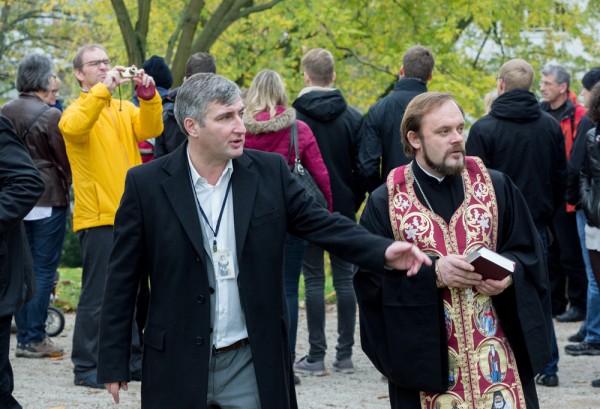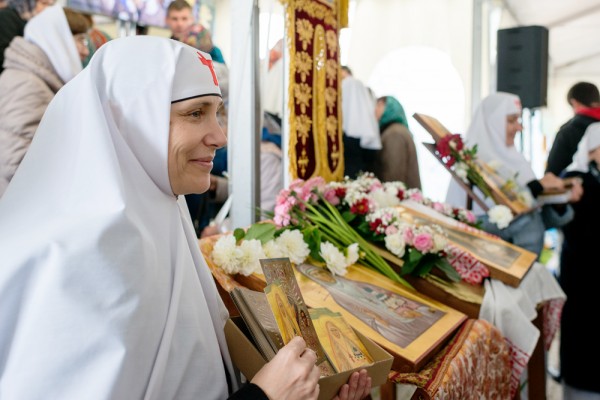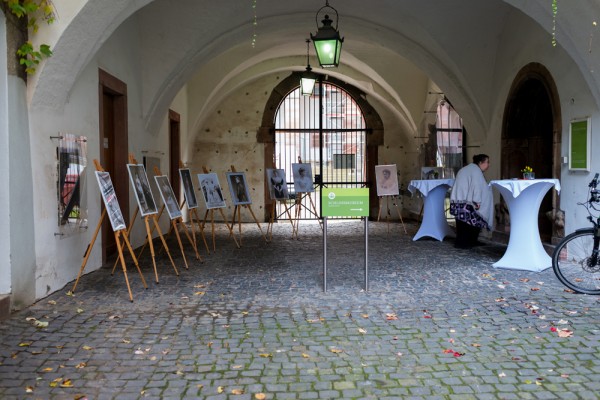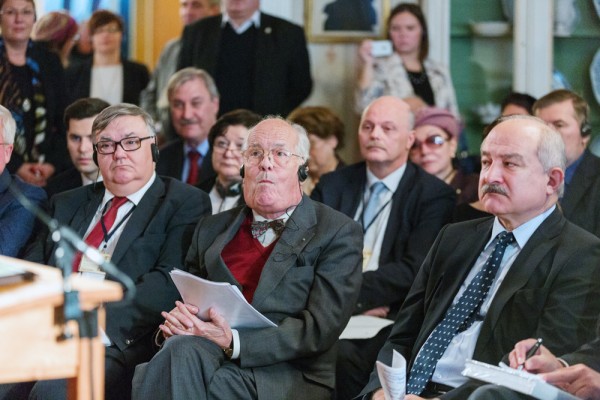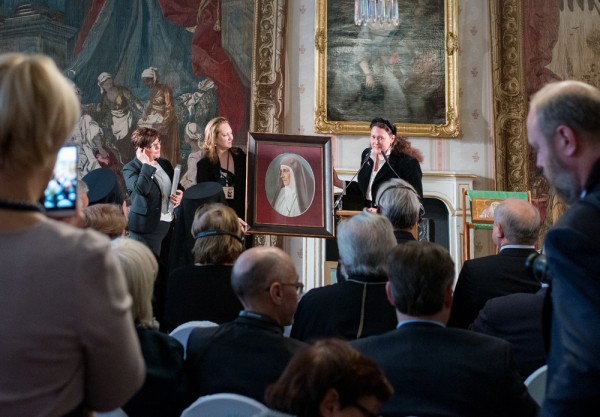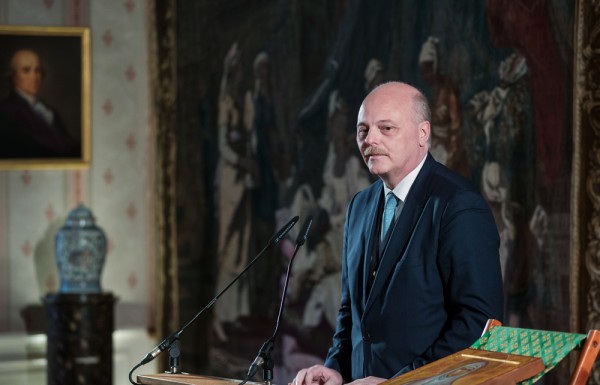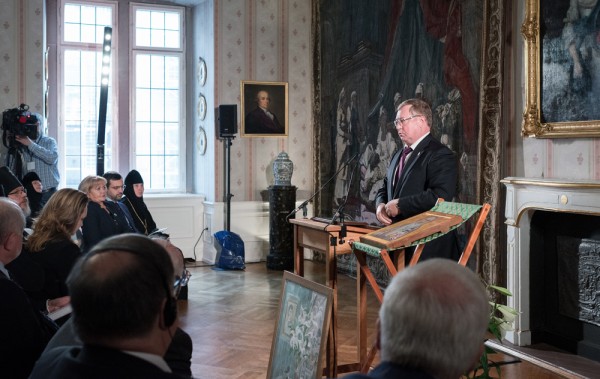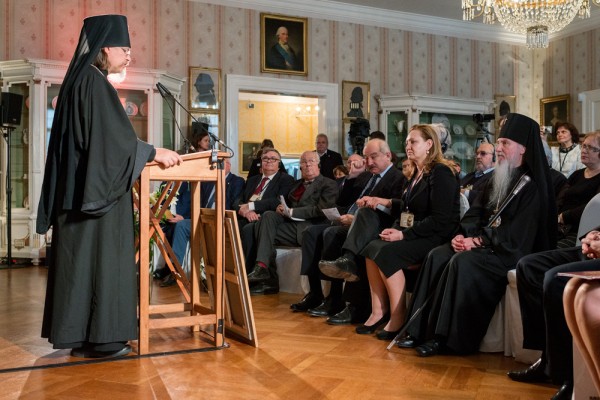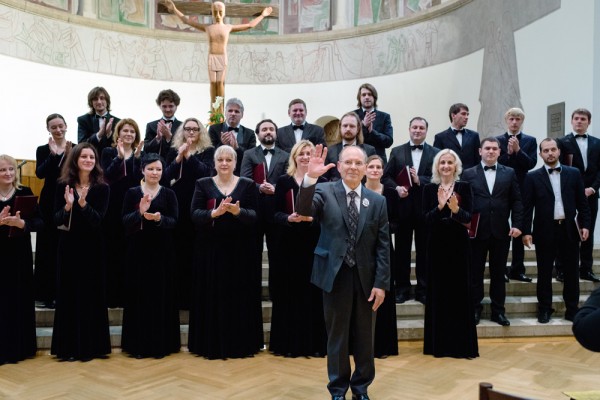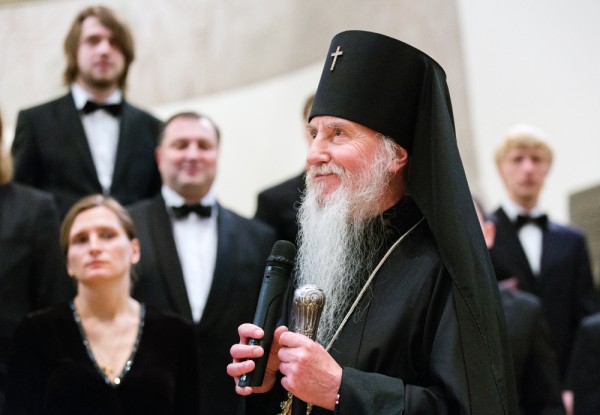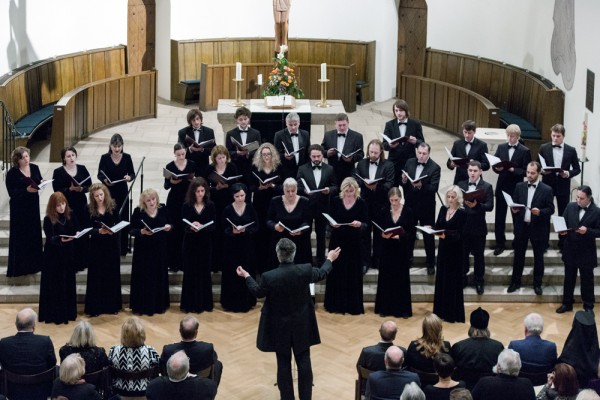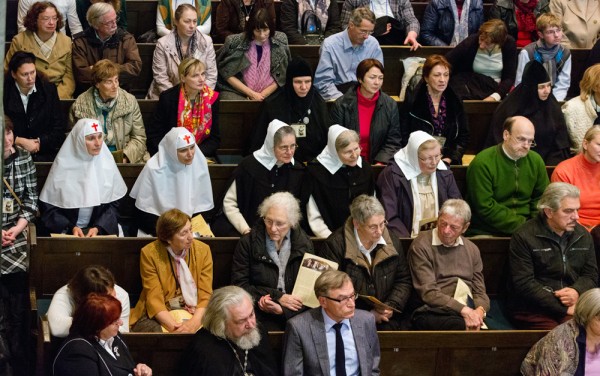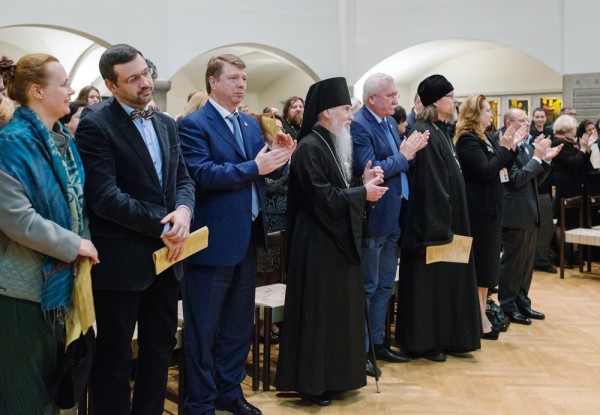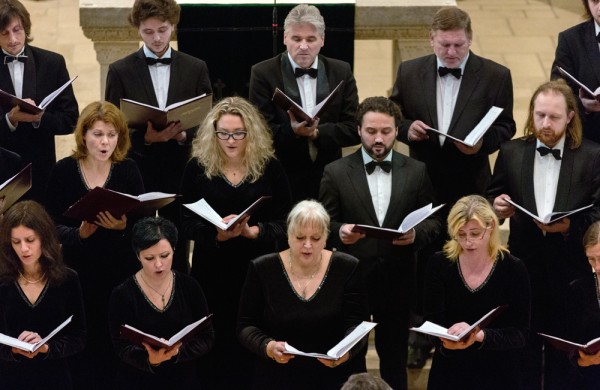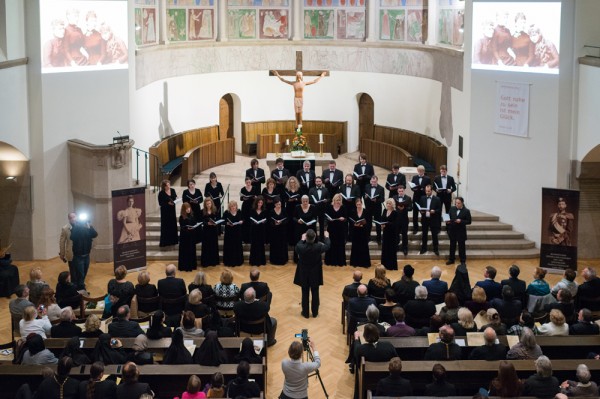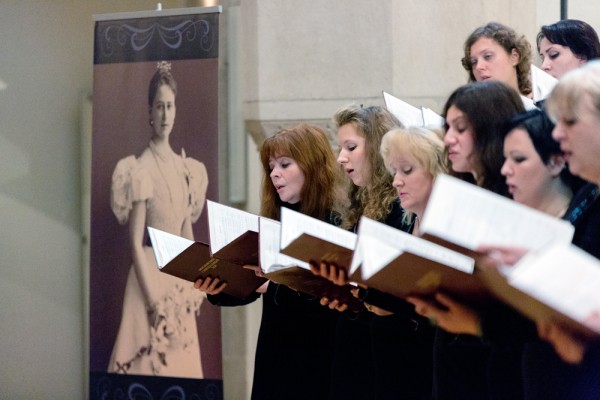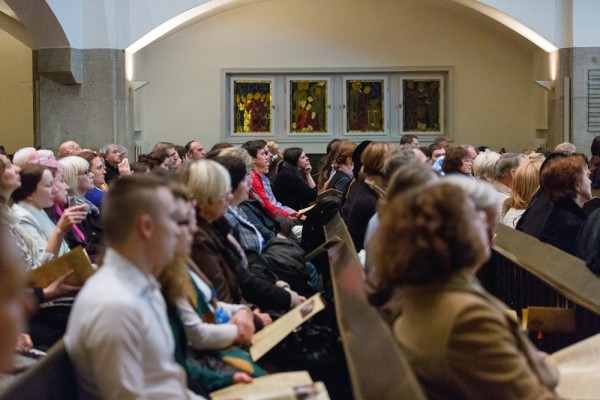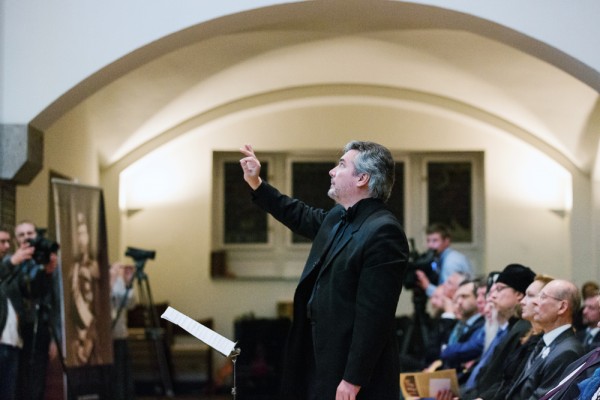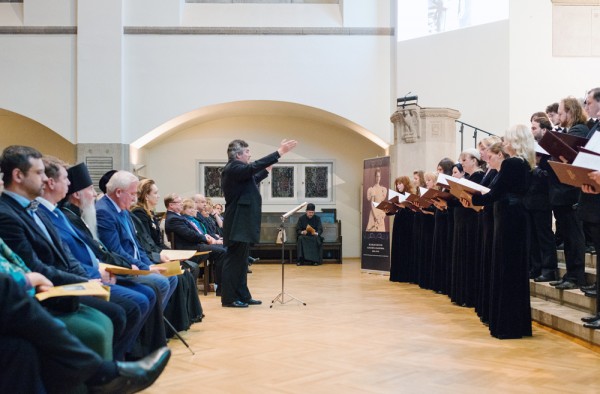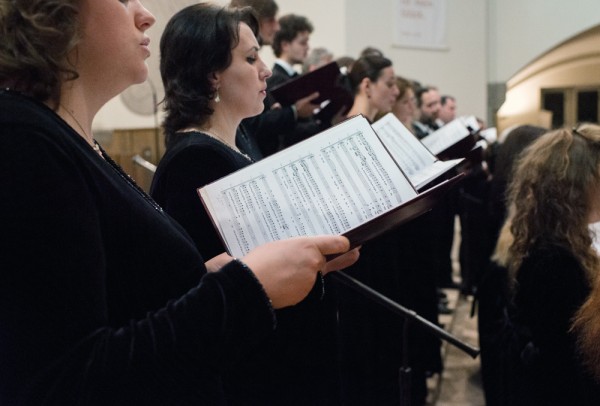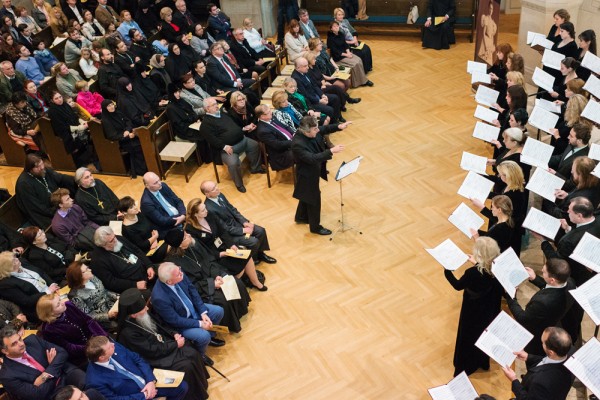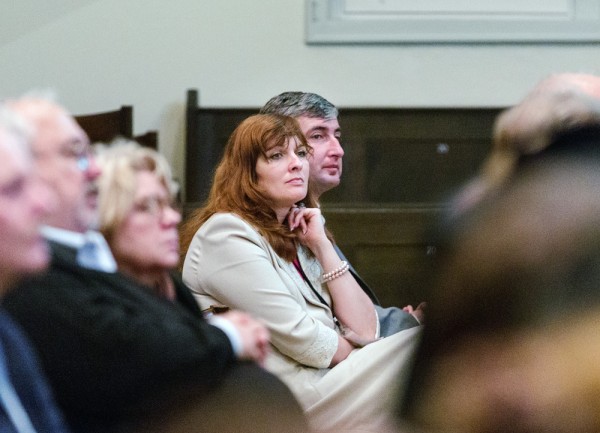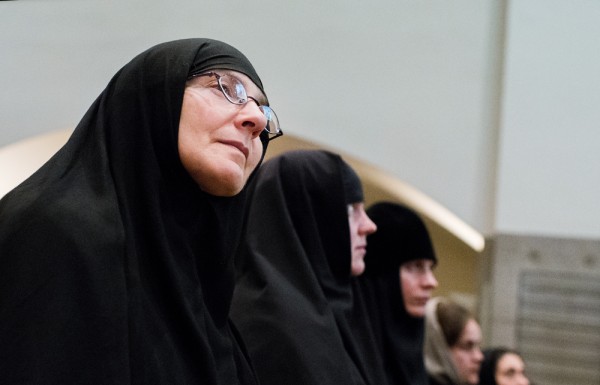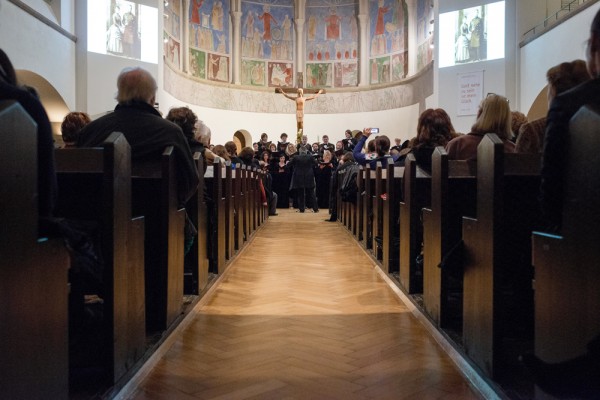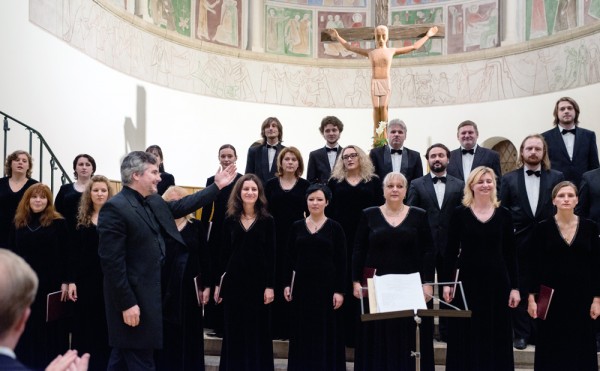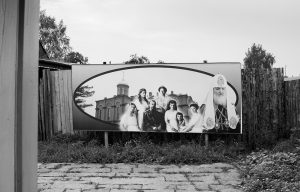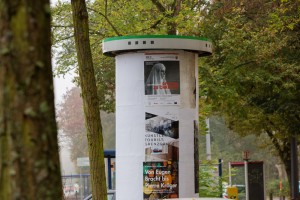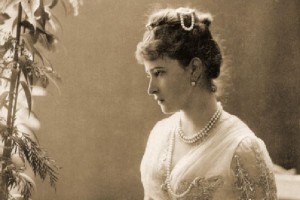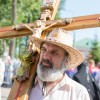In the morning, the Divine Liturgy was celebrated at the St. Mary Magdalene Church. Sheds and an awning had been installed near the small church, which was constructed on the outskirts of Darmstadt at the end of the nineteenth century.
It was expected that the church would not be able to hold all the guests and pilgrims due to its small size. Large plasma screens broadcasting the service were placed outside for those who prayed outdoors.
The broadcast was made by German television. There were also many representatives of Russian print media.
Five hierarchs concelebrated at the service: Archbishop Mark of Berlin, Germany, and Great Britain; Archbishop Mark of Yegoryevsk; Metropolitan Augustin; Archbishop Theophan of Berlin and Germany; and Archbishop John of the Antiochian Church and Palmyra.
Among the guests were Sergei Stepashin, Chairman of the Imperial Orthodox Palestine Society (IOPS); Igor Ashurbeyli, his deputy; Anna Gromova, Council Chairwoman of the “St. Elizabeth-St. Sergius Educational Society” Fund; Paul Kulikovsky-Romanov, great-grandchild of Emperor Alexander III;
Abbess Elizabeth, Superior of the St. Martha and Mary Convent in Moscow;
pilgrims, nuns, and Sisters of Mercy from monasteries, parishes, and sisterhoods in honor of the Grand Duchess Elizabeth Feodorovna in various cities, including Yekaterinburg, Kiev, Alapayevsk, Minsk, Kaluga, Perm, and Rostov-on-Don.
The Moscow Synodal choir headed by Aleksei Puzakov, an honored artist of Russia, performed during the divine service.
Following the service, parishioners of the St. Martha-Mary Convent prepared a meal for the guests – baked cakes and curd pies – and prepared tea and stewed fruit.
Conference
After midday, a conference titled “St. Elizabeth’s Inheritance Today: Russia and the Near Abroad” opened at the Darmstadt castle.
Representatives of the Darmstadt authorities sat next to honored guests from Russia in the front row.
Mrs. Gromova, Council Chairwoman of the “St. Elizabeth-St. Sergius Educational Society” Fund, presented Lord Mayor Walter Hoffman with a portrait of the Grand Duchess Elizabeth Feodorovna. She also expressed her hope that the St. Elizabeth’s celebrations would become a tradition in Darmstadt in order that Germans might remember the Russian saint, who was born in Darmstadt, in Hesse.
Perhaps the most interesting part was a speech by Mr. Ashurbeyli, Deputy Chairman of the IOPS. He read out excerpts from the will of St. Elizabeth Feodorovna: “I would like to be buried in the crypt under the church in honor of the Protection of the Most Holy Theotokos, which I have recently built, at my residence at Bolshaya Ordynka Street in Moscow, near my Convent of Mercy, at the place that I showed to the abbess. My coffin should be moved down to the very bottom, in the ground… In case I die abroad or outside Moscow, I ask that you put me in a coffin, close it completely, and transfer it to Moscow, where it should be buried at the above-specified location without opening the coffin.” Mr. Ashurbeyli added that he considered the will of St. Elizabeth to be holy and that is why he would strive to transfer her Holy Relics to Moscow and bury them where she wanted.
In his interview with Pravmir.com, he noted: “I’m doing it in order to fulfill the written testament of the venerable saint and to restore historical justice. I’m tired of those legends that tour guides tell in Jerusalem about the young Duchess’ first visit to the city with her husband, when she, undoubtedly being mesmerized by the beauty of Jerusalem, exclaimed, ‘I would like to be buried here so much!” When I visited the city, I exclaimed the same thing too. But it was nothing but a dramatic exclamation of a young, beautiful lady. After all, her husband was killed after that, she founded the St. Martha-Mary Convent, and then she wrote her spiritual will! It was published, signed, and she herself stated what she wanted in black and white. It’s just nobody was brave enough to speak about it out loud for the past 96 years. I would like to return St. Elizabeth’s Holy Relics to the St. Martha-Mary Convent in Moscow by the 100th anniversary of her death.”
Concert
In the evening, the world preview of a musical piece entitled “The Way to Christ” took place at a Catholic cathedral in honor of St. Paul.
It was composed specially for the 150th anniversary of the birth of the Venerable Martyr, the Grand Duchess Elizabeth Feodorovna, and consists of hymns in Znamenny chant and choral singing of the sixteenth and seventeenth centuries.
Anatoly Konotop, the honored artist of Russia and professor with PhD in Art History, deciphered, created the chant, and adapted the music.
In his interview with the “Orthodoxy and the World” website, he spoke about the foundation of this music piece, saying: “The sixteenth-seventeenth centuries are the most crucial period in the development of the art of singing. I chose one tradition from this period: the tradition of the Suprasl Annunciation Lavra. I examined the manuscript of hymns prepared for the 100th anniversary of the monastery’s construction in 1498. It appeared to include all traditions of service singing from small irmoses to unbelievably enormous canticles. Basing on this extensive manuscript and its mosaic, I have created a service to St. Elizabeth Feodorovna. When I started to compose this music, I couldn’t find the inspiration for a long time. I went to Darmstadt and asked Orthodox Christians there to help me and give me a written service venerating St. Elizabeth Feodorovna. They gave me such a service. It was wonderful and inspired me. Only later I did fid out that the author of the divine texts glorifying the Venerable Martyr Elizabeth was Archbishop Mark of Berlin.”
The “Way to Christ” hymns written in Znamenny chant that glorify the life of the Grand Duchess Elizabeth Feodorovna were sung by the Moscow Synodal choir headed by Aleksei Puzakov, the honored artist of Russia.
Germans and Russians sat next to each other at the concert.
After the concert, the audience rose in applause.












